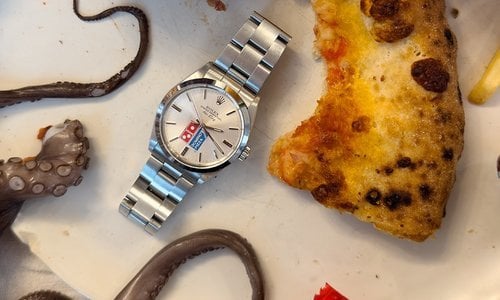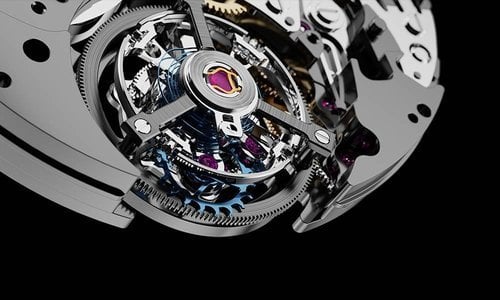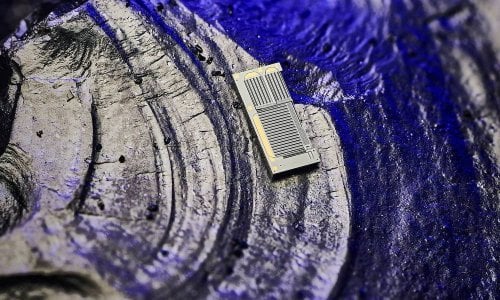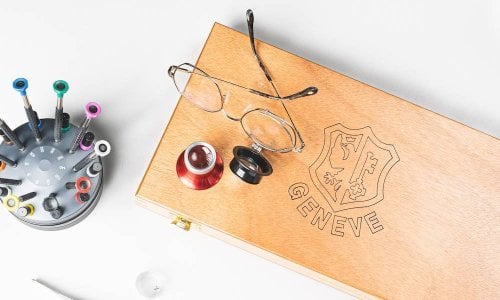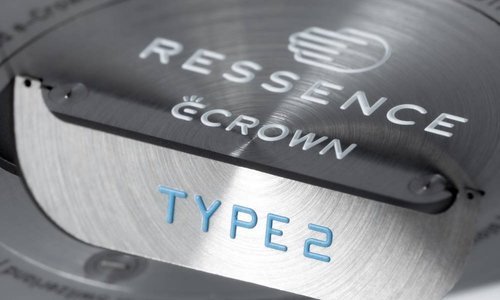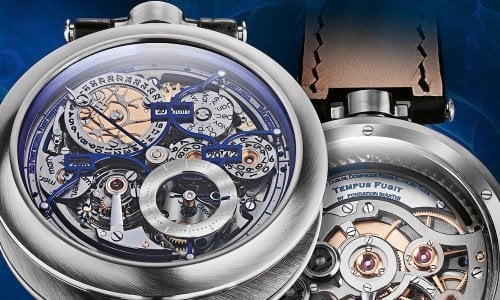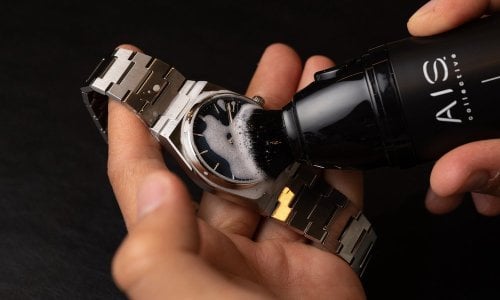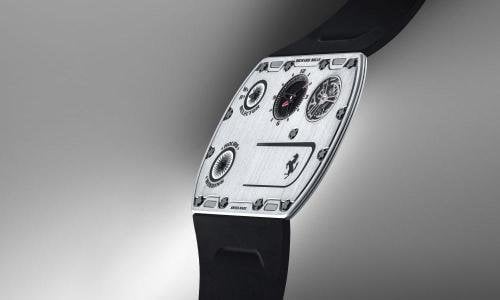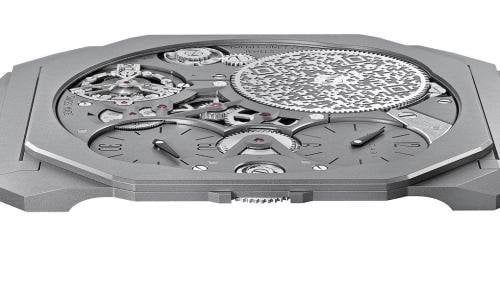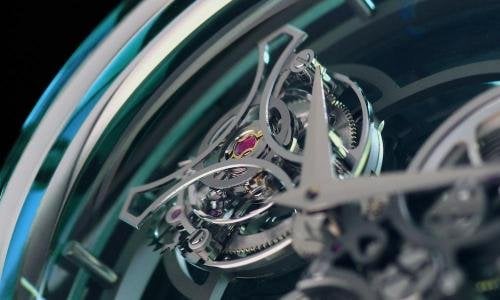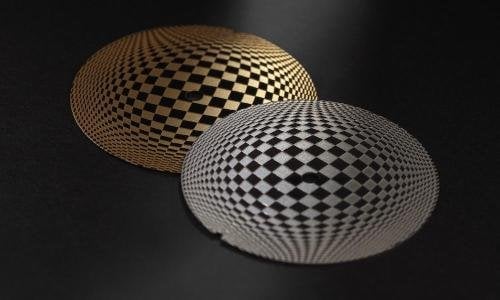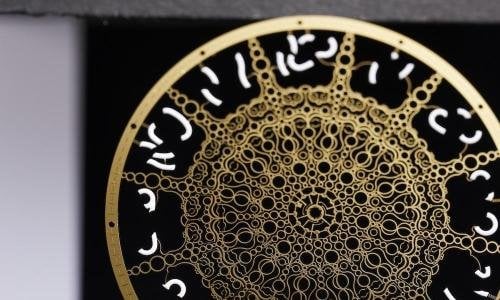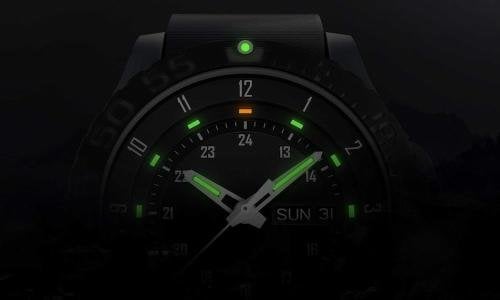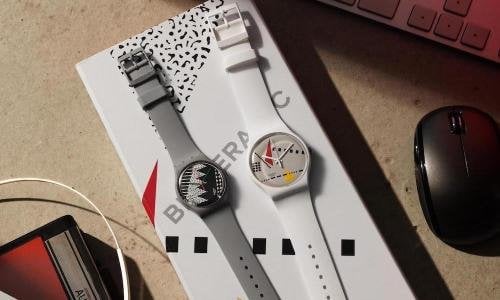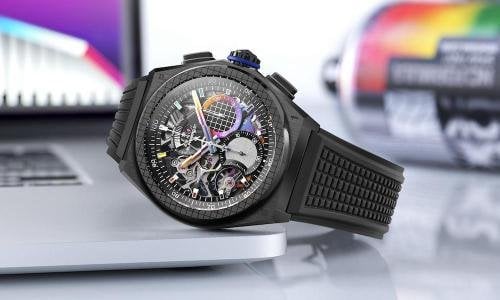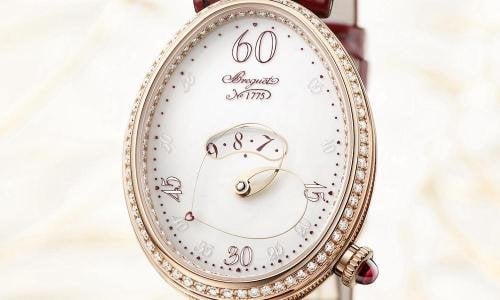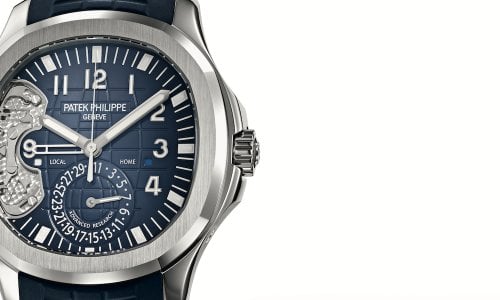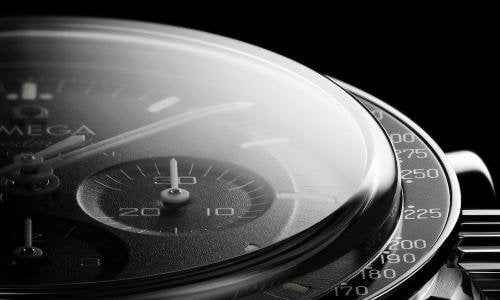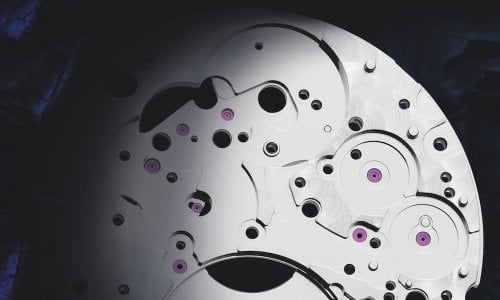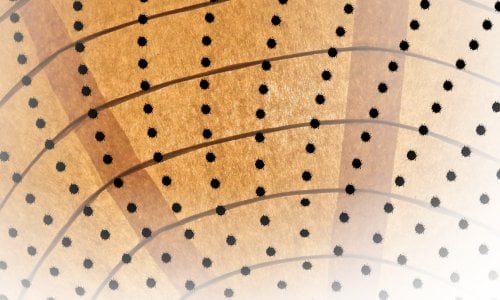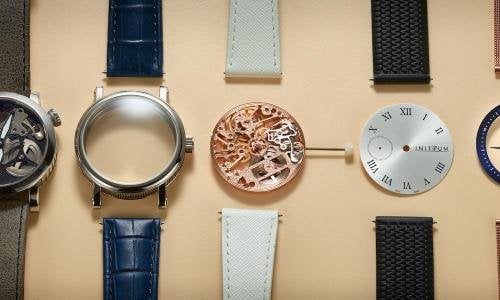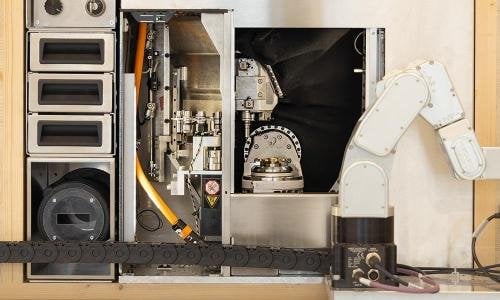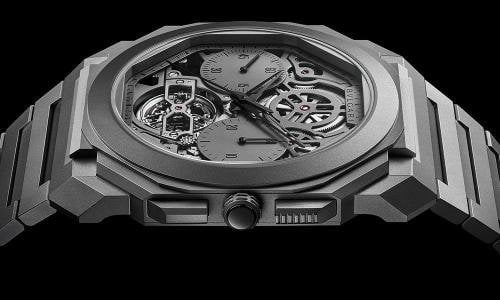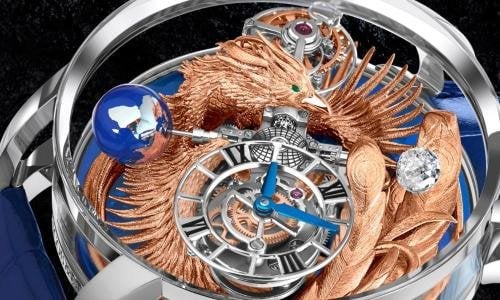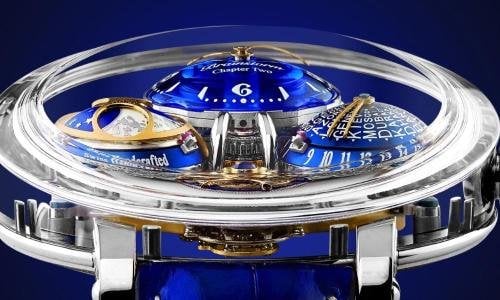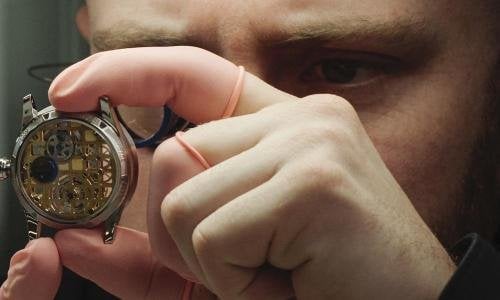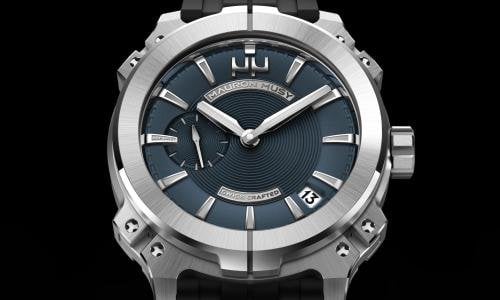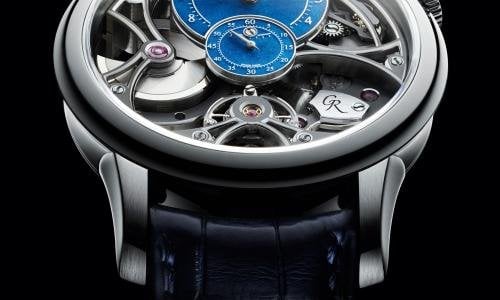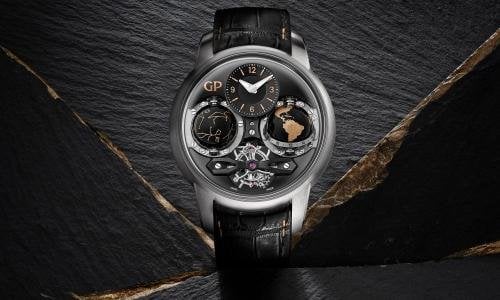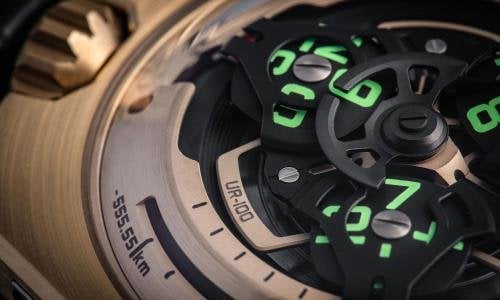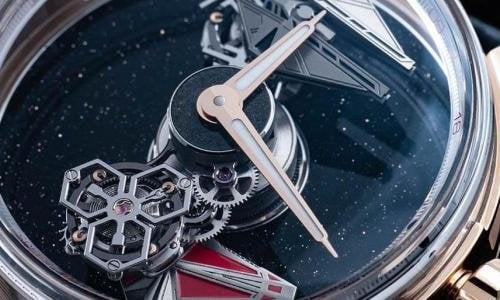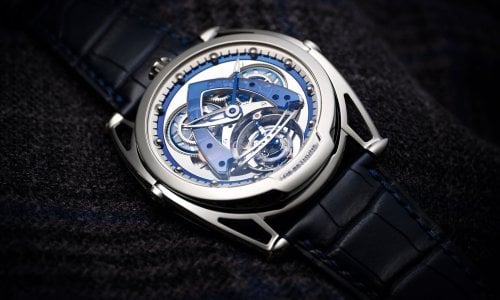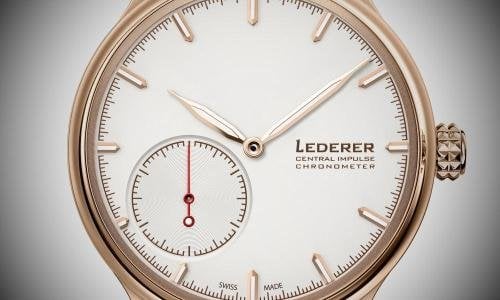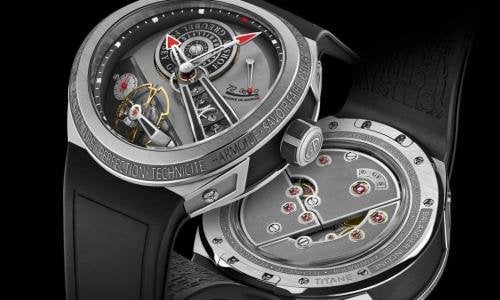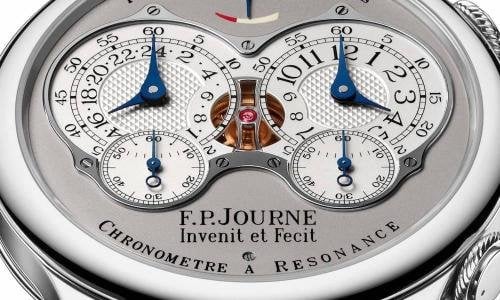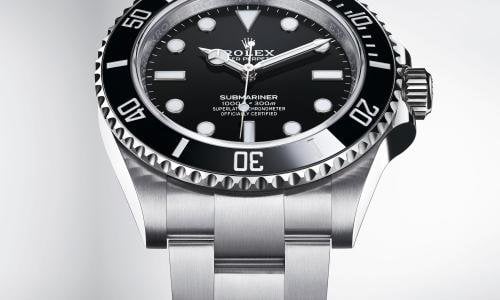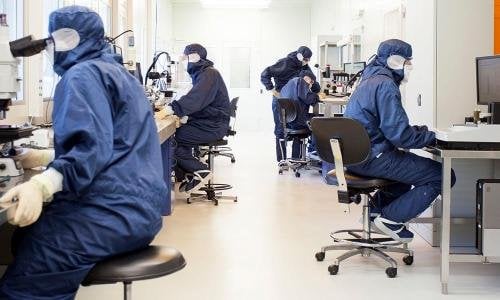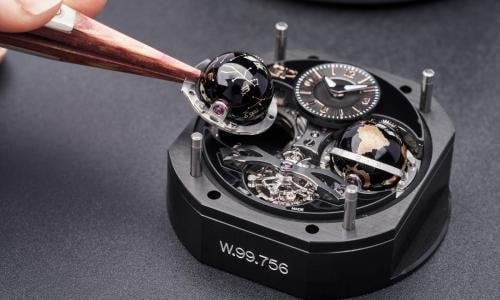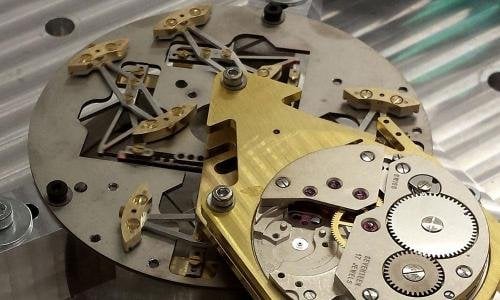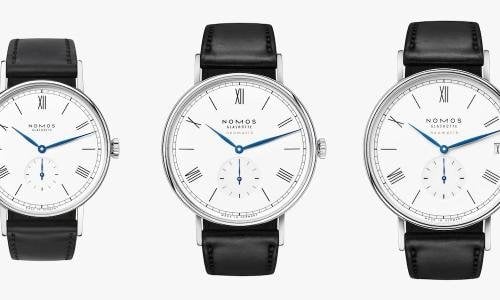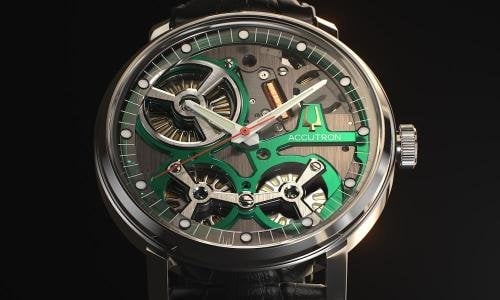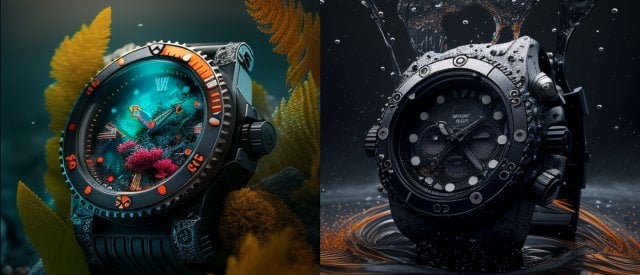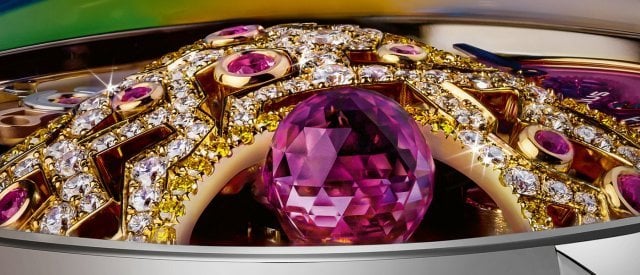echnologically obsolete, the art of watchmaking continues largely thanks to the appeal of its ingenious exploits. But even doubling, tripling, or quadrupling tourbillons is becoming old hat. Audiences are getting bored. In the seventeenth and eighteenth centuries, watchmaking marched in the vanguard of science; it was a tool for basic research into navigation, astronomy, ballistics and chemistry, to name just some examples. But what if mechanical watchmaking – based on a whole new kind of mechanism – returned to the forefront of science?
Research conducted in recent years is now resulting in actual products which brilliantly demonstrate that mechanisms are not dead by a long chalk – and that a complete renaissance is possible.
Scientific watchmaking in the 21st century
The leads being pursued in this renaissance are many and varied: at HYT, they take the form of liquids and capsules, at Zenith, carbon nanotube balance springs and a new, monolithic regulator. Greubel Forsey is conducting advanced research into nanotechnology, while Dominique Renaud is focusing on micro-pivots and blades. And those are just some examples, because other brands have also begun research into regulators.
Besides these, new, ‘compliant’ forms of mechanism, together with origami mechanisms, are opening up truly new prospects, although these have so far been confined largely to the laboratory. But combined with advances in robotics, they could well be ushering in mechanisms so radically different that it is hard to predict how mechanical watches will look in ten years’ time. If they still exist at all.
The regulator revolution: Zenith Defy Lab
Yet most of the research which is attaining actual implementation today in the shape of marketed products covers the actual regulator and not the power supply, which remains largely traditional – a barrel and wheel train. This is the case of the Zenith Defy Lab, or at Dominique Renaud, for example.
With the totally innovative oscillator of the Zenith Defy Lab, Guy Sémon and his multidisciplinary teams at LVMH have chalked up a major advance by successfully combining the 31 or so parts of a conventional regulating organ into one single, monolithic component in monocrystalline silicon, 0.5 mm thick. No need for assembly, adjustment or lubrication. It uses considerably less power and is virtually unaffected by incidental variations in power and position.
-
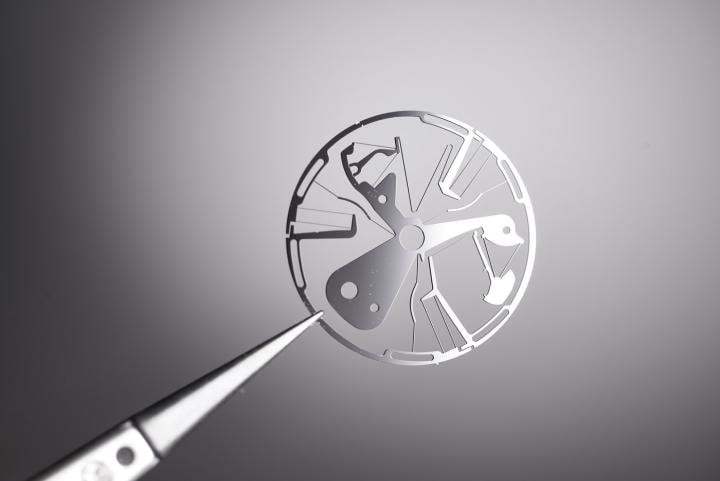
- Zenith Defy Lab
It is accurate to around 0.3 seconds a day and this remains consistent during 95% of its power reserve. Moreover, this oscillator is unaffected by gravity, magnetism and temperature.
The regulator revolution: the DR-01 from Dominique Renaud
The regulator solution put forward by Dominique Renaud with his recently unveiled DR-01 is quite different, but also opens up interesting prospects. A microscopic, unbreakable ‘spatial pivot’ supports a heavy ‘balance’ with high inertia, the balance spring being replaced by a ‘spatially pivoting blade resonator’.
Razor-sharp blades mounted on notched, spherical rubies vibrate synchronously with one another with minimum friction and, consequently, a power loss virtually equivalent to nil. The crossbow-shaped resonator spring that holds the sharpened blades in place assumes the role of balance spring. The balance, twenty times heavier than a traditional balance, rotates freely, driven by a single- impulse detent-type escapement system, called ‘lost beat’. This escapement is such that for one impulse, there are 9 lost beats. Which means that it is capable of vibrating at extremely high frequencies.
This ensemble – the unbreakable micro-pivot, spatially pivoting blade resonator and detent-type lost-beat escapement – represents numerous advances and can genuinely be described as revolutionary. With a total amplitude of 340 degrees between each impulse and a record frequency that can ‘easily attain’ 12Hz (84,600 vibrations/h), its very low power consumption, ‘unprecedented’ power reserve (we’re talking of weeks) and its superlative chronometric performance, the DR-01 Twelve First really is opening a whole new chapter in the history of watchmaking.
Or even a whole new book. Because Dominique Renaud’s ambition over the next few years is to present twelve different prototypes of the DR that will shake the very foundations of mechanical watchmaking, which were thought to be immutable.
-
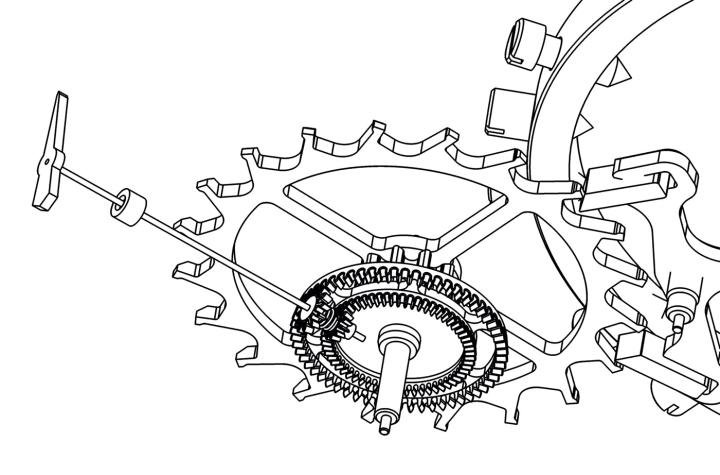
- Greubel Forsey Mechanical Nano
The nano era: Greubel Forsey
As for Robert Greubel and Stephen Forsey, they are exploring the astonishing possibilities of nano-mechanisms. At the 2018 SIHH, the duo showcased a fully implemented prototype of their Nano Foudroyante EWT.
This nano-foudroyante consumes 1,800 times less power than a ‘normal’ foudroyante, and the space this nanocomplication occupies has been reduced by 96%!
“Saving that much power and space opens up whole new vistas,” explains Stephen Forsey. “By saving that much power, we can achieve power reserves of up to 180 days, at this stage in our research, with a normal-sized barrel. What’s more, we can use the energy produced by internal air turbulence – in other words, put draughts to practical use.
That means that a propulsion wheel can work with 20 nano-newtons of energy, 100,000 less than the power it takes to drive an escape wheel.” Contrary to what you might imagine, working at the nanometric level (there are one billion nanometres to one metre) does not mean working with the same components in miniature. Far from being a micrometric ‘reproduction’, passing from the one-tenth or one-thousandth scale to the one-billionth scale allows you to completely redesign a movement’s energy and space distribution.
The space this frees up – huge, the size of a watch movement – means you can start imagining functions as yet unheard-of. So – what kind of functions? “This space is just opening up and it’s forcing us to think about what we’re going to do with it,” replies Stephen Forsey. “We’ve already placed a frequency indicator in it, but what else? It opens up unprecedented prospects for creativity and functionality.”
Science is a precious ally in the ‘wars’ of competition.
LVMH is going for folding mechanisms
But that’s not all. The mechanisms of the future still have plenty of surprises in store. The scientific research done by Guy Sémon at LVMH led him to explore ‘compliant’ mechanisms. This new mechanical theory is used in robotics, particularly, to conduct tasks that require very subtle amounts of force. It sets new premises and creates new associations no longer based solely on the interaction of different, rigid parts, but made possible by the use of flexible materials.
It is this new theory that has allowed an assembly of different fixed or mobile parts to be replaced by one monolithic structure.
Compliant mechanics open up the possibilities of designing origami mechanisms capable of folding and unfolding. Still the reserve of robotics research for the moment, it has already resulted in the design of minirobots that are able to change shape autonomously. From there it’s just one step – yet to be taken – to completely new kinds of watchmaking mechanisms, for example in the shape of a ‘flower’ that opens and closes.
Liquids and capsules at HYT
And what if innovations in watchmaking could benefit other sectors, such as the medical industry, where the issue is less about mastering time and more about mastering life itself?
This is increasingly evident every year at that grand rallying point of watchmaking suppliers, the EPHJ trade fair in Geneva, where financially challenged microtechnology specialists seek to gain a foothold in the lucrative medtech sector, of which Switzerland is also a global hub. Don’t forget that it was here, for example, that the first stents were developed, in Zurich and Lausanne in the late 1970s, and that today, Switzerland is home to giants of the medical sector such as Sonova, Ypsomed, Straumann, Johnson & Johnson Medical, Biotronik and Medtronic.
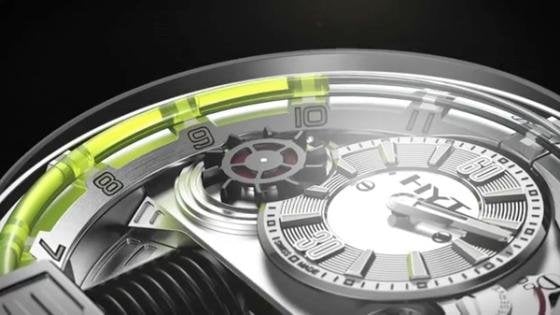
It is into this rich ecosystem that Preciflex intends to diversify. Preciflex is the sister company of watchmaker HYT, which is renowned for its watches in which coloured liquids show the time instead of the traditional hands – thereby putting a whole new perspective on the passage of time, with an intuitive vision of past and future. In reality, today HYT is acting as a showcase or ‘pilot fish’ for the future possibilities of Preciflex.
Might the applications currently used in watches, which are all about mastering the precise movement of tiny amounts of liquid (microlitres) on living bodies and thus inevitably subject to huge constraints (temperature, shocks, etc.), tomorrow be used in the human body for medical purposes? It is plain, though, that standards in the medical sector will be far more stringent than in watchmaking. Two years ago, this small conglomerate raised funds of more than 20 million dollars. One of the investors was a certain Peter Brabeck, formerly CEO of Nestlé, who had already very strongly geared that giant towards the health industry.
The strategic issues underlying these innovations
Looking beyond the scientific and technological adventure, the issues underlying these new mechanisms are also strategic, as they afford complete autonomy to the players engaged in developing them.
The development of balance springs made from carbon nanotubes, again by Guy Sémon and his team, are a cogent demonstration of this. Having passed virtually under the radar, this astonishing development – ‘growing’ nanotubes to make balance springs is a world premiere – is set to make LVMH independent in the strategic sector of balance springs, until now largely dominated by Nivarox-FAR of the Swatch Group.
Science is a precious ally in the ‘wars’ of competition.
Click here to get back to
“12 DISRUPTIONS IN THE WATCHMAKING INDUSTRY”



